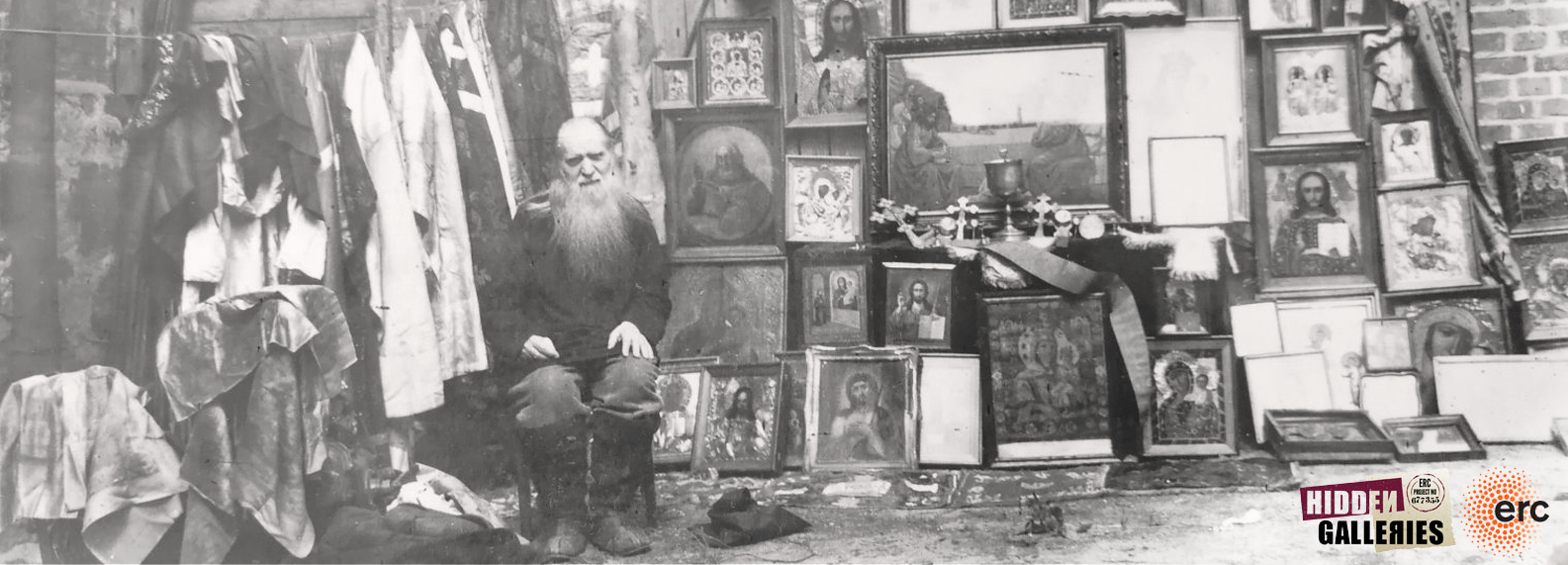Images of religious leaders
Item set
Title
Images of religious leaders
Description
The rapid development of photographic technology in the 20th century resulted in new forms of visual expression in religious field. It made the production and reproduction iconographic images more accessible to communities, both large and small, urban and rural, and offered them more creative possibilities. Groups were able to experiment and innovate utilizing new techniques of photographic production which in turn gave birth to new forms of devotional image.
In Central and Eastern Europe, authoritarian regimes (sometimes in cooperation with majority or mainstream churches and denominations) attempted to regulate and control the production of non-sanctioned religious images of leaders who were not recognised by authorised religious institutions. In this context, the image of a religious leader could become a mark of creative resistance by religious groups.
Some groups developed icon-style photographic images of leaders persecuted by the regime reflecting their would-be saintly identity.
Such photographs, that could be mass produced and easily hidden became widespread in some contexts, especially amongst Orthodox dissenting movements.
The widespread use of images of religious leaders meant that they were often found on arrested believers. Such images were useful to the secret police as they could prove membership of illegal or banned groups and allegiance to unauthorised, underground leaders. Police officers could also try to identify the social networks through which the photographs were produced and spread. As a result, secret police investigation and case files contain numerous images of religious leaders found on arrested individuals that were used as evidence during the trials.
In Central and Eastern Europe, authoritarian regimes (sometimes in cooperation with majority or mainstream churches and denominations) attempted to regulate and control the production of non-sanctioned religious images of leaders who were not recognised by authorised religious institutions. In this context, the image of a religious leader could become a mark of creative resistance by religious groups.
Some groups developed icon-style photographic images of leaders persecuted by the regime reflecting their would-be saintly identity.
Such photographs, that could be mass produced and easily hidden became widespread in some contexts, especially amongst Orthodox dissenting movements.
The widespread use of images of religious leaders meant that they were often found on arrested believers. Such images were useful to the secret police as they could prove membership of illegal or banned groups and allegiance to unauthorised, underground leaders. Police officers could also try to identify the social networks through which the photographs were produced and spread. As a result, secret police investigation and case files contain numerous images of religious leaders found on arrested individuals that were used as evidence during the trials.
Creator
Dumitru Lisnic
Publisher
Hidden Galleries (ERC project no. 677355)
Items
-
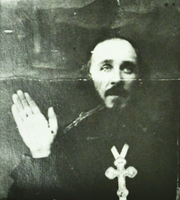
Devotional images of a Catholic monk, Ukraine
These photographs are of the Catholic monk N. F. Gumenski, who was arrested by the Soviet secret police in 1935. The first image was cropped from a photo icon and in this photograph Gumenski wears a large pectoral cross on his chest and holds his right palm open. The second image is a photo which depicts Gumenski in a white clerical habit with a prayer rope in his left hand and with his right hand holding a cross. These photographs were attached to a Soviet secret police report from 9 November 1935. The report is signed by Nikolai Sharov, the chief of NKVD department of Kiev oblast, and in -
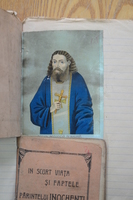
Postcard-icon of Feodosie Levițchi
This postcard icon portrays Feodosie Levițchi (Romanian spelling) or Teodosie Levitsky (in Russian) (1791-1845), of Balta (today’s Odessa Oblast, Ukraine). It was confiscated from a Bessarabian peasant in 1938 who had been charged with Inochentist propaganda and sentenced to 45 days imprisonment. Feodosie was an important figure for the Inochentist movement as Inochentie of Balta (1875-1917) was instrumental in sponsoring the cult of his deceased predecessor and distributed mass produced icons (like the one seen here) and miracle stories across Ukraine and Bessarabia to encourage pilgrims to v -
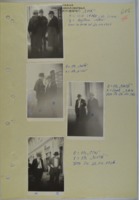
Surveillance photos of Greek Catholic bishop Ioan Dragomir Romania
These three pages of photo collages represent three instances in which Greek Catholic Bishop Ioan Dragomir was captured by secret police surveillance shortly after his release from prison in 1966. They all come from Dragomir’s individual file that extends to ten volumes. The first two collages are of photographs taken in stake out operations by Securitate officers from Maramureș county at the request of the central offices of the secret police. The officers had been instructed to map the network of persons Bishop Dragomir had contact with in his daily activities. These images consist of two -
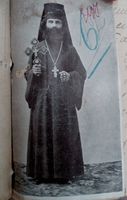
Photo-icons of Inochentie of Balta Ukraine
The four photo-icons of Inochentie of Balta were confiscated by the Soviet secret police in 1921 from the Inochentist community of the village of Lipetcoe (Balta county, Odessa Governorate). The village of Lipetcoe was the spiritual centre of Inochentism, where believers established an underground monastery and a utopian communal society called Gradina Raiului (the Garden of Paradice). In September 1920, a few months after the Red Army occupied Lipetcoe, Soviet authorities closed the monastery and expelled a number of Inochentist leaders from Gradina Raiului. The second major repressive ope -
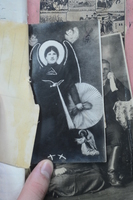
Photo-icon of Alexandru Culeac as the Archangel Michael Bessarabia
The three images presented here all show variants of the same photo-icon of Alexandru Culeac portrayed as the Archangel Michael. In the first image he appears alone; in the second image, his photograph appears next to that of Inochentie of Balta, and the third image is a reproduction of the photo-icon that appears inside the front cover of a booklet containing Alexandru Culeac's visions entitled "A vision that appeared in 1920". The presence of multiple examples of this photo-icon in the same file reflects the importance of this devotional image to the Archangelist community. Archangelism fo -
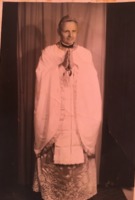
Images of clandestine Greek Catholic services in Transylvania
The four images illustrate the religious life of a Greek Catholic community in 1970s Transylvania as recorded by the community in photographs and how it is described by the Securitate on the basis of their surveillance and investigation of the community. These materials represent a rare instance where it has been possible to relate secret police descriptions to photographic materials that can still be found in the community. The first three images come from the private collection of Mihai and Ana Rus and form part of a group of photos related to their regular attendance at religious services -
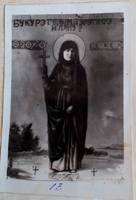
Confiscated images of Archangelist women Moldova
These photographs were confiscated by the secret police of the Moldavian SSR from a community of Archangelists in 1952. Archangelism inherited the iconographic tradition of Eastern Christianity and developed them creatively using modern techniques of photograph, photocopying, collage and multiplication. The first image was produced using the technique of photo collage. The creator of the image has utilised a copy of an Orthodox icon showing a female saint replacing the face of the saint with a photograph of the face of Elena Culiac, venerated by Archangelists as the embodiment of Virgin Mary o -

Confiscated group photograph of Inochentists Romania
This confiscated photograph was included in a personal file of an Inochentist leader alongside several others collated by the Romanian Securitate. The image shows the male leader flanked by two women from the community. Such group and community photographs feature heavily amongst the corpus of confiscated images in the secret police archives in Romania as for the secret police they were a convenient means of tracing networks and personal relationships of the religious underground. The case file does not state when the images were confiscated but from an Informer Report that appears elsewhere -

Inventory and confiscated items from a house search of an Archangelist-Inochentist Romania
The images show an inventory and confiscated photographs included in a case file forwarded to the Romanian 3rd Army Military Court on 2nd December 1938. The first image shows the inventory of items found in the house, which was located in Fălciu county. The officer lists the following Inochentist "propaganda" materials: "1. A brochure entitled 'The Deeds of the Archangel Michael', 2. a small icon of saint Paraschiva, 3. a cross sculpted from wood, 4. three photographs of Culeac dressed in white with a cross on his chest, 5. a photograph of Culeac dressed in vestments." The second image shows o -
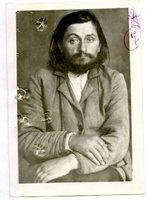
Mugshot of Old Calendarist monk Glicherie Tănase Romania
These mugshots were confiscated in 1952 by the Securitate from Onofrei V. Onofrei, an Old Calendarist monk, who was also the secretary of the Old Calendarist community. The mugshots of Glicherie Tănase, one of the most important Old Calendarist leaders, were taken in 1936, when he was arrested after the first confrontations between the Old Calendarists and the state authorities in Neamț county. He was arrested again, in 1952, and numerous attempts were made by members of the group to set him free. According to the penal file of Onofrei V. Onofrei, described as one of the youngest members of -
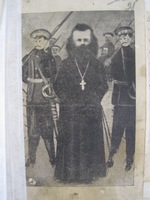
Inochentist postcard-icons Transnistria
The images show postcards and mass produced photographs confiscated from a group of arrested Inochentists in February 1942 in the village of Cuibușor, in Romanian-occupied Transnistria. Image 1 and 2 show the front and reverse of a postcard. On the front, the monk Inochentie (1875-1917) is shown in a scene from his vernacular hagiography in which he is under arrest, surrounded by Tsarist soldiers after his attempted to escape from exile on Solovetsky island. The reverse of the postcard, comprises short quotes and adaptations from the New Testament. Here text and image were configured in a rel
